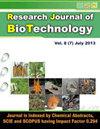台风榴莲毁损区12年自然复林后赤枝蟹的多样性
IF 0.2
Q4 Biochemistry, Genetics and Molecular Biology
引用次数: 0
摘要
台风榴莲过后,芹吉奥红树林的再生一直是一个有趣的研究课题,希望能制定出应对未来类似后果的计划。本研究共记录到蟹类26种,隶属于10科16属,其中以芝麻科和蟹科所占比例最高。在2006年榴莲台风破坏地区的自然再造林中,新记录了Paracleistostoma depressum、Pilumnopeus sp.、Macrophthamus japonicus、Myomenippe hardwickii、Nanosesarma pontianacense、Uca annulipes等6种物种的出现。特别是在所有地区,大狐猴都是优势种,表明它们具有适应多种生境的能力。在自然再生区发现了一些新记录物种,特别是Uca蟹。更新区蟹类密度和生物量均高于原生林;Shannon Weiner指数表明,更新区螃蟹群落具有较高的多样性。相反,在原始林中,辛普森优势度指数高于更新区。研究结果表明,自然更新为螃蟹群落的恢复创造了条件,为许多新物种的出现创造了机会。一般来说,单作林的开放树冠有助于增加螃蟹的数量,特别是增加生物多样性。保留台风过后的自然条件,有助生态系统恢复。本文章由计算机程序翻译,如有差异,请以英文原文为准。
Diversity of Brachyuran crabs after 12 years natural reforestation at destroyed areas by typhoon Durian in Can Gio mangrove
The regeneration of mangroves in Can Gio following typhoon Durian has been the subject of interesting research, with the hope of developing plans to deal with similar consequences in the future. In this study, we recorded 26 species of crabs belonging to 16 genera and 10 families, of which the Sesarmidae and Ocypodidae families accounted for the highest proportion. The natural reforestation in the destroyed area by the previous Durian typhoon in 2006 has recorded the appearance of 6 new recorded species such as Paracleistostoma depressum, Pilumnopeus sp., Macrophthamus japonicus, Myomenippe hardwickii, Nanosesarma pontianacense and Uca annulipes. Particularly, Perisesarma eumolpe was the dominant species in all areas, indicating their ability to adapt to many habitats. Several new recorded species, especially Uca crabs, were recorded in naturally regenerated areas. The densities and biomass of crabs in regenerated areas were higher than those in intact forests. Shannon Weiner index indicated that the crab community had higher diversity in the regenerated areas. On the contrary, in the intact forest, the Simpson dominance index is higher than in the regenerated areas. The results of this study indicated that natural regeneration has created conditions for the crab community to recover opportunities for many new species to appear. The open canopy of monoculture forests would contribute to increasing the number of crabs,in particular and biodiversity, in general. Retaining the natural conditions after the typhoon had shown effectiveness in helping the ecosystem recover.
求助全文
通过发布文献求助,成功后即可免费获取论文全文。
去求助
来源期刊

Research Journal of Biotechnology
工程技术-生物工程与应用微生物
CiteScore
0.60
自引率
0.00%
发文量
192
审稿时长
1.5 months
期刊介绍:
We invite you to contribute Research Papers / Short Communications / Review Papers:
-In any field of Biotechnology, Biochemistry, Microbiology and Industrial Microbiology, Soil Technology, Agriculture Biotechnology.
-in any field related to Food Biotechnology, Nutrition Biotechnology, Genetic Engineering and Commercial Biotechnology.
-in any field of Biotechnology related to Drugs and Pharmaceutical products for human beings, animals and plants.
-in any field related to Environmental Biotechnolgy, Waste Treatment of Liquids, Soilds and Gases; Sustainability.
-in inter-realted field of Chemical Sciences, Biological Sciences, Environmental Sciences and Life Sciences.
-in any field related to Biotechnological Engineering, Industrial Biotechnology and Instrumentation.
-in any field related to Nano-technology.
-in any field related to Plant Biotechnology.
 求助内容:
求助内容: 应助结果提醒方式:
应助结果提醒方式:


